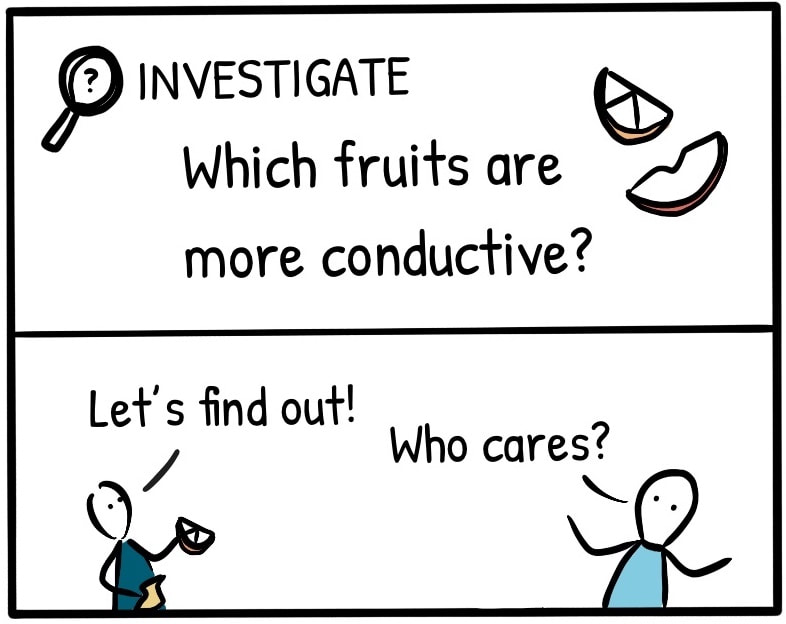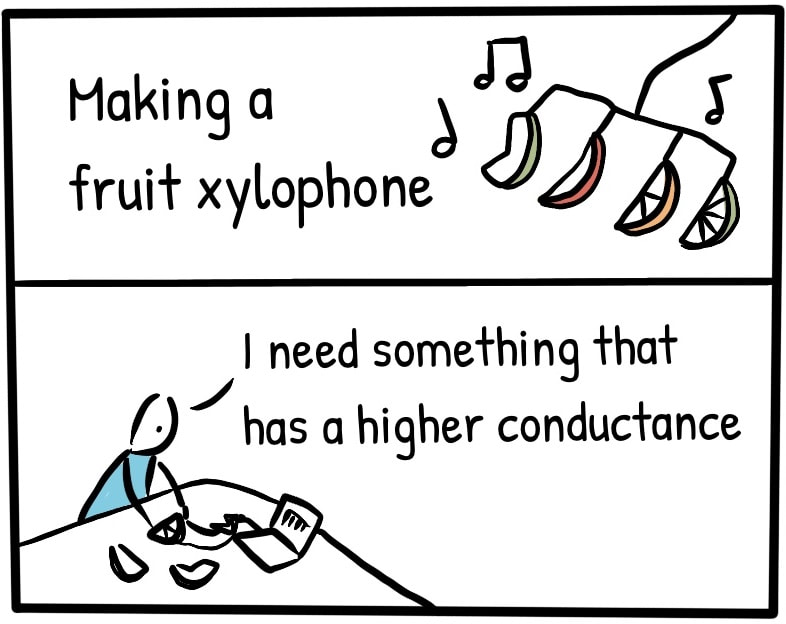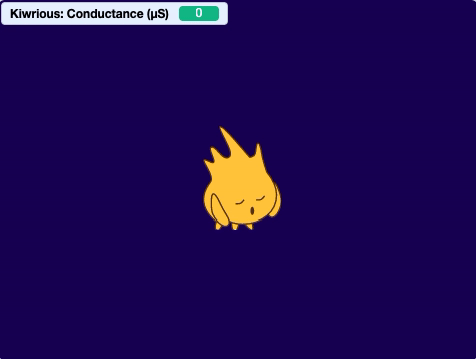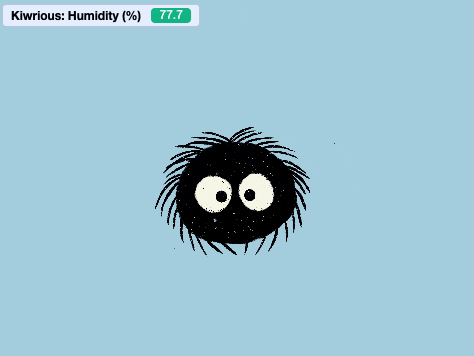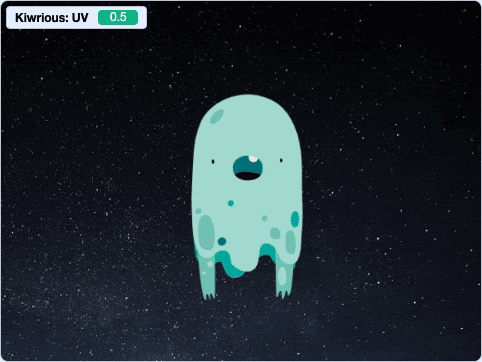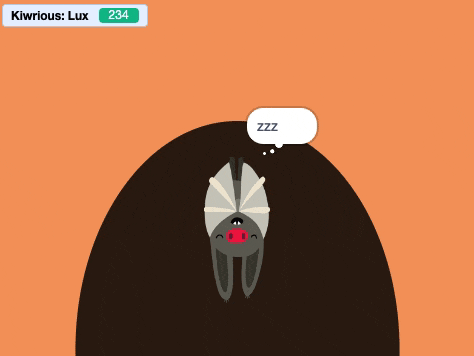Scratch coding + Kiwrious sensors
Kiwrious sensors plug directly into a USB port and measure phenomena such as ultraviolet light, visible light, conductance, total volatile organic compounds, humidity and ambient temperature.
Scratch is an open-source visual programming platform widely used to introduce children to programming. Children can build and share their own stories, games, and animations.
I proposed building a Scratch extension for the Kiwrious sensors to complement our science learning platform. Hussel, a researcher and developer on the Kiwrious team, built the extension to connect the sensors to Scratch and hosted this modified version of Scratch on our own website.
Scratch would enable students to build a wide range of personally meaningful projects and provide a different pathway for learning. I believed this could help us reach our UX goals - for Kiwrious to eventually have wide walls and a high ceiling, without investing significant development resources.
Scratch is an open-source visual programming platform widely used to introduce children to programming. Children can build and share their own stories, games, and animations.
I proposed building a Scratch extension for the Kiwrious sensors to complement our science learning platform. Hussel, a researcher and developer on the Kiwrious team, built the extension to connect the sensors to Scratch and hosted this modified version of Scratch on our own website.
Scratch would enable students to build a wide range of personally meaningful projects and provide a different pathway for learning. I believed this could help us reach our UX goals - for Kiwrious to eventually have wide walls and a high ceiling, without investing significant development resources.
I created several projects to provide starter and inspiration projects for students.
We didn't have sharing built into our version of Scratch when we first started, so I set up another Padlet board for users to upload and share projects with each other. Hussel subsequently developed a sharing feature that would automatically create an entry in the padlet board for users to browse, comment on and download code for projects.
Animated character workshop
I planned a workshop to introduce the sensors and scratch to a group of 8 students as small pilot. The students had previous experience using the sensors to take measurements, but were new to the Scratch platform.
By the end of the 1 hour workshop they had all built their own sensor-based animations. Two students personalised their characters, with one recording their voice, and one uploading a custom anime character. Another student started on a second project and completed and shared it after the workshop.
The padlet sharing board and workshop minisite were used and adapted for Hussel's subsequent research studies exploring the use of real-time sensor data in Scratch - Scratch and Sense.
By the end of the 1 hour workshop they had all built their own sensor-based animations. Two students personalised their characters, with one recording their voice, and one uploading a custom anime character. Another student started on a second project and completed and shared it after the workshop.
The padlet sharing board and workshop minisite were used and adapted for Hussel's subsequent research studies exploring the use of real-time sensor data in Scratch - Scratch and Sense.
